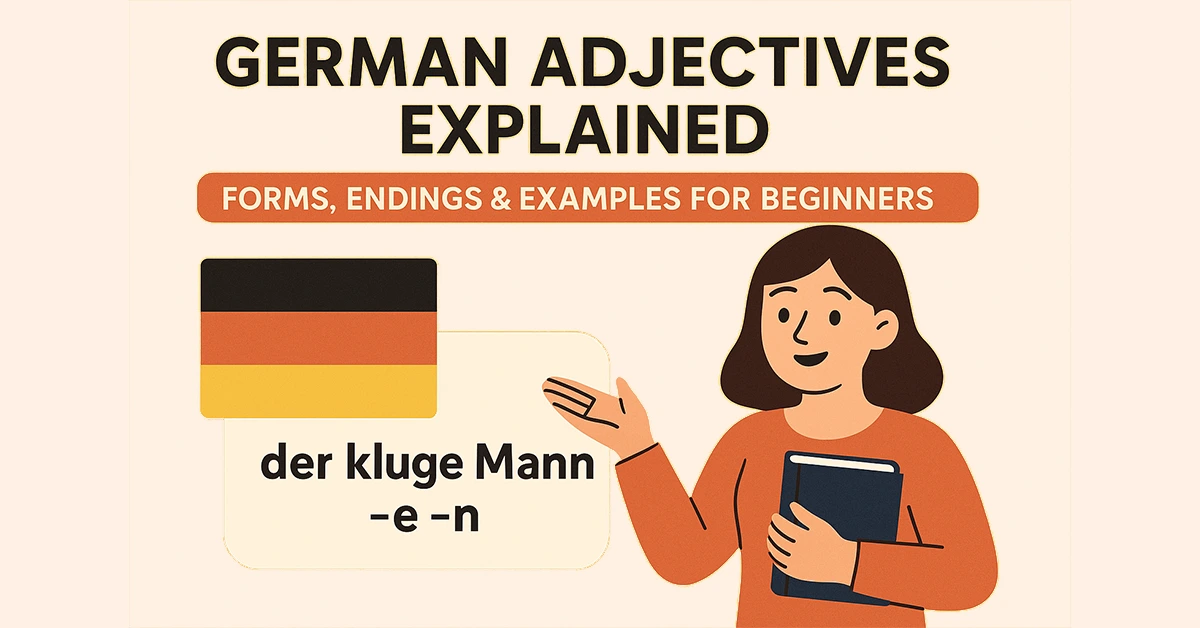German adjectives
-

German Adjectives Explained: Forms, Endings & Examples
Learn how to use German adjectives correctly with this beginner-friendly guide. Explore endings, declension tables & examples to improve your German grammar.

Learn how to use German adjectives correctly with this beginner-friendly guide. Explore endings, declension tables & examples to improve your German grammar.